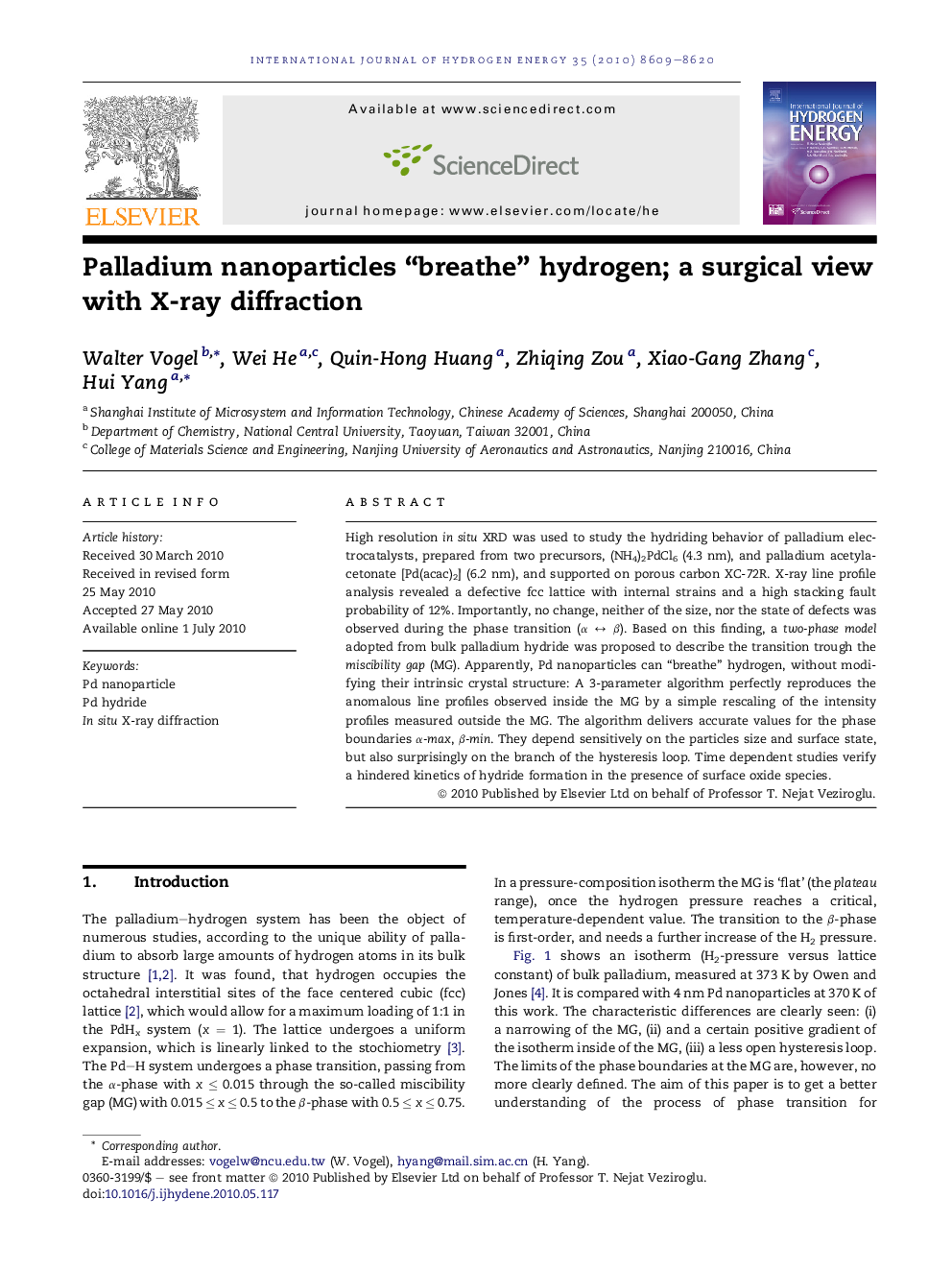| کد مقاله | کد نشریه | سال انتشار | مقاله انگلیسی | نسخه تمام متن |
|---|---|---|---|---|
| 1280440 | 1497601 | 2010 | 12 صفحه PDF | دانلود رایگان |

High resolution in situ XRD was used to study the hydriding behavior of palladium electrocatalysts, prepared from two precursors, (NH4)2PdCl6 (4.3 nm), and palladium acetylacetonate [Pd(acac)2] (6.2 nm), and supported on porous carbon XC-72R. X-ray line profile analysis revealed a defective fcc lattice with internal strains and a high stacking fault probability of 12%. Importantly, no change, neither of the size, nor the state of defects was observed during the phase transition (α ↔ β). Based on this finding, a two-phase model adopted from bulk palladium hydride was proposed to describe the transition trough the miscibility gap (MG). Apparently, Pd nanoparticles can “breathe” hydrogen, without modifying their intrinsic crystal structure: A 3-parameter algorithm perfectly reproduces the anomalous line profiles observed inside the MG by a simple rescaling of the intensity profiles measured outside the MG. The algorithm delivers accurate values for the phase boundaries α-max, β-min. They depend sensitively on the particles size and surface state, but also surprisingly on the branch of the hysteresis loop. Time dependent studies verify a hindered kinetics of hydride formation in the presence of surface oxide species.
Journal: International Journal of Hydrogen Energy - Volume 35, Issue 16, August 2010, Pages 8609–8620